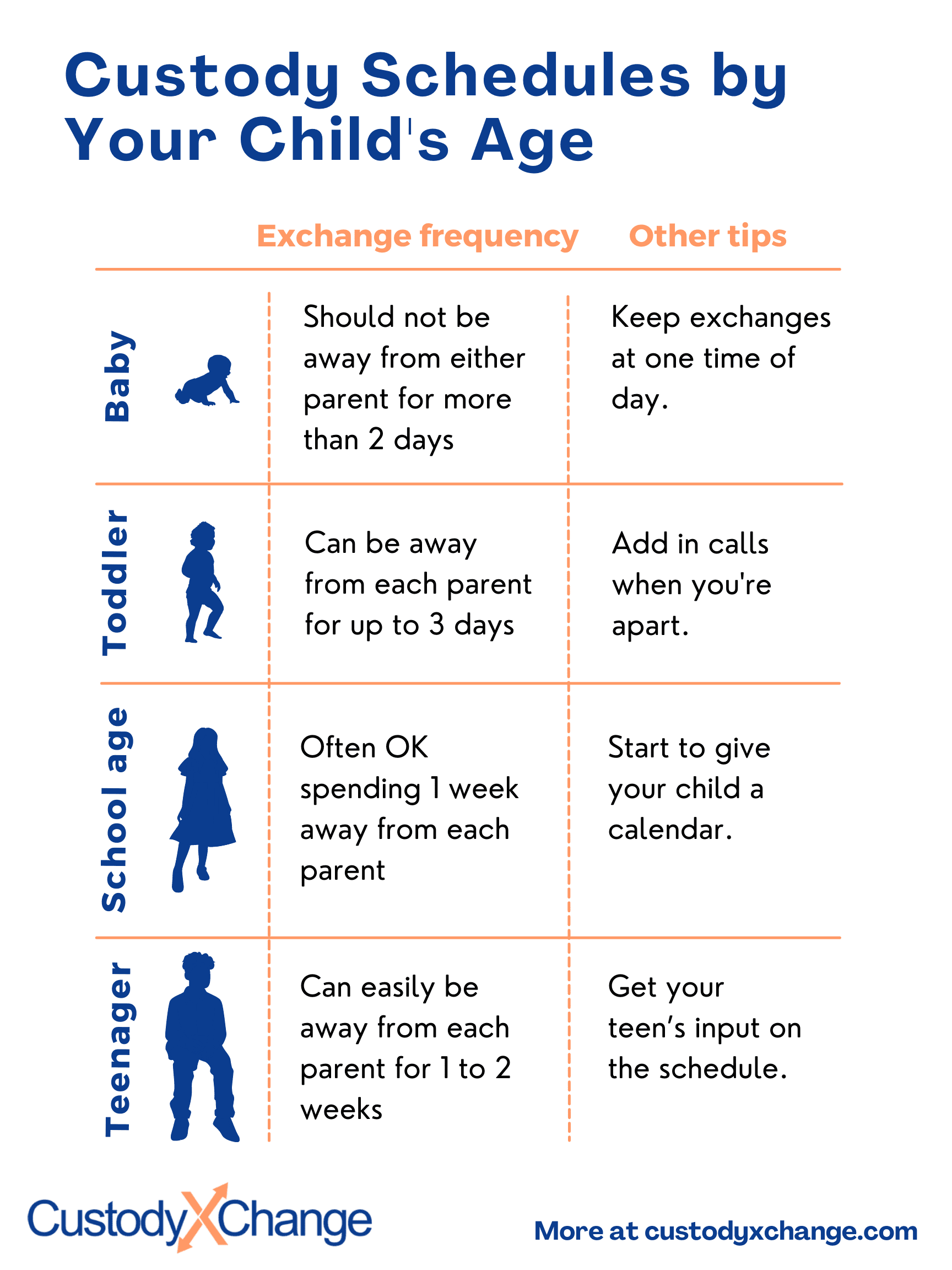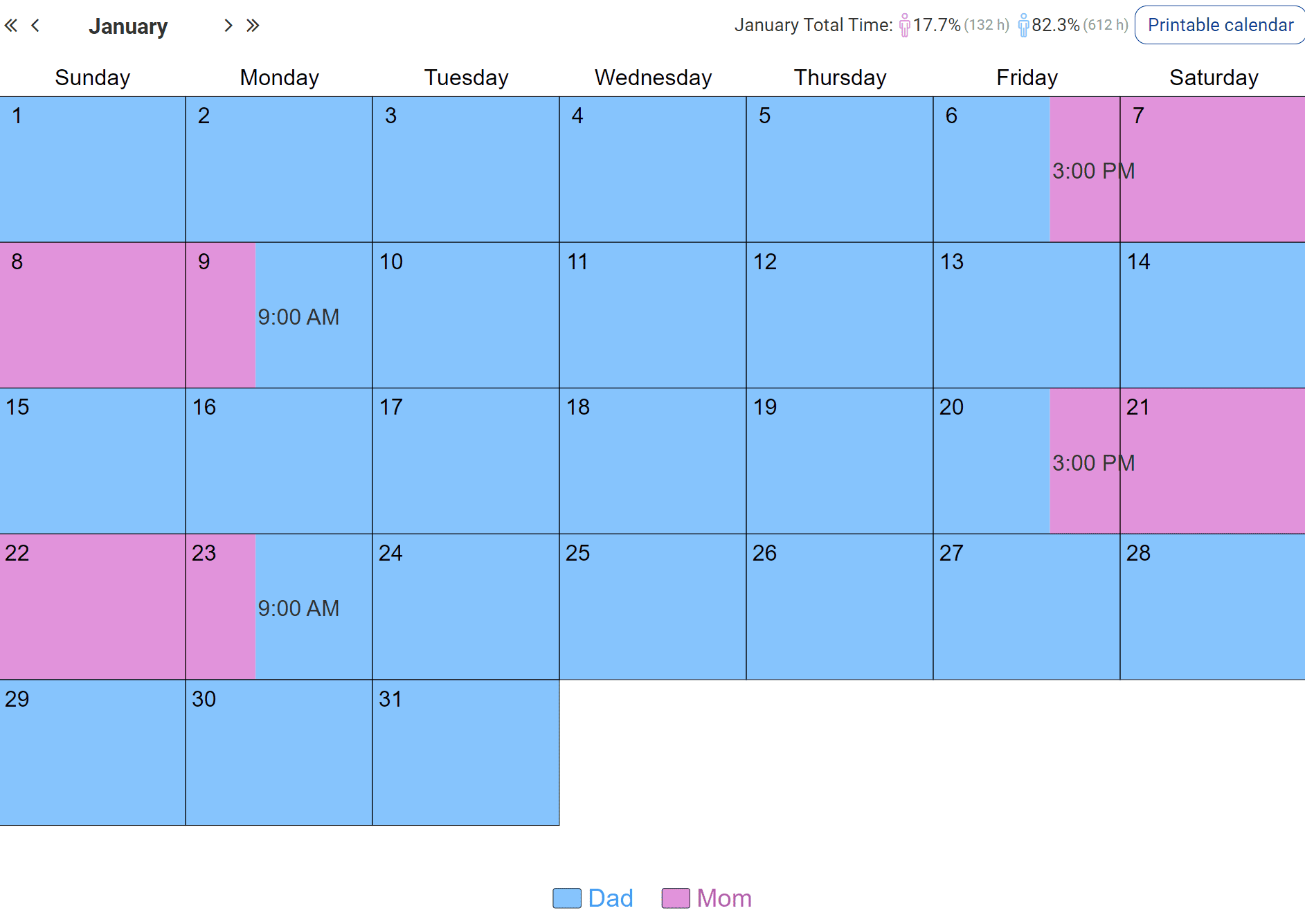Long-Distance Schedules for Toddlers and Young Children
Children benefit tremendously from having both parents involved in their lives. Children that have both parents actively participating in their lives are generally happier and better behaved than children with an absent parent. Most courts concede that it is in the best interest of a child to have frequent and continuing contact with both parents.
Visualize your schedule. Get a written parenting plan. Calculate your parenting time.

How a parent's move can affect your child
Toddlers and young children are still developing mentally and emotionally. Ideally, small children should have the opportunity to bond with and establish relationships with both parents.
When distance becomes a factor it can have a substantial effect on the amount of time a child gets to spend with the noncustodial parent. This can have an impact on how the child relates to the other parent and their emotional bonds.
If a parent that has been actively involved in a child's life moves away and suddenly becomes absent, it can have a serious impact on the child. The child may mourn the "loss" of the parent and act out or become distressed or saddened. This can affect eating habits, sleep habits, and the child's behavior in general.
Use technology to keep in touch
Thankfully, technology has advanced to the point where even if you cannot physically be there with your child, you can still see and talk to your child every day if you want to. Applications such as Skype and Facetime allow users to see each other and talk over an internet connection.
Theoretically, an absent parent may be able to see their child daily and even read them a nightly bedtime story even if they can't be there in person. If you don't have access to video chat, talking on the phone is still a great way to keep in touch with your child.
A noncustodial parent has to rely on the cooperation of the primary parent in order to communicate with their child in this manner. A reasonable parent would understand the importance of parent-child communication and not only permit it, but encourage it.
However, it is a good idea to include provisions for communicating with your child in your custody plan so you will have a form of recourse if the other parent refuses to let you speak to your child.
Transportation and expenses
Creating a visitation schedule for a toddler or young child becomes a little tricky when distance is involved because of the child's young age. Young children cannot fly unaccompanied so arrangements will need to be made regarding the logistics of the transportation and who will be responsible for paying the expenses as well as the days and times.
The time and travel expenses involved when distance is a factor in your custody situation make even every other weekend visitation unpractical for most people.
As you make your visitation schedule for your young child, you should consider including provisions that allow the noncustodial parent to travel to the child for visitation when possible. It is much easier and less expensive for an adult to drive ten hours or fly to visit a child than it is to transport the child to the adult.
The easiest way to organize your long-distance custody arrangement
Handling a long-distance custody arrangement on your own can feel overwhelming — especially when you have young children. You'll need to account for visits, remote communication and travel accommodations among other things.
The Custody X Change app helps you create a parenting plan detailing how you'll cover all the necessary topics. As a result, you'll get a professional court-ready document with airtight legal language.

You'll also build a schedule, giving you a visual calendar simple enough for your child to understand.

For quick, reliable and affordable help making a parenting plan and custody schedule, turn to Custody X Change.
Visualize your schedule. Get a written parenting plan. Calculate your parenting time.
